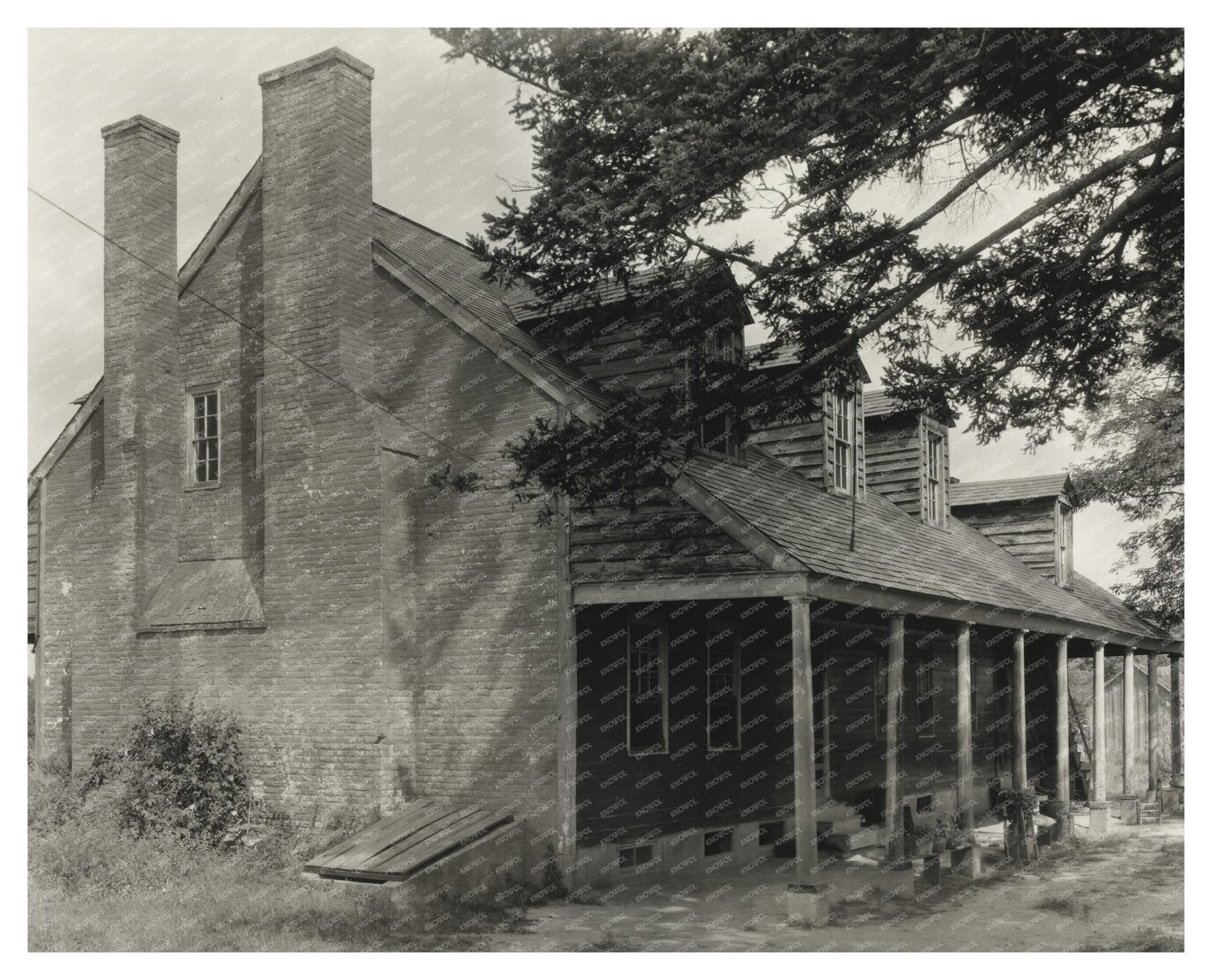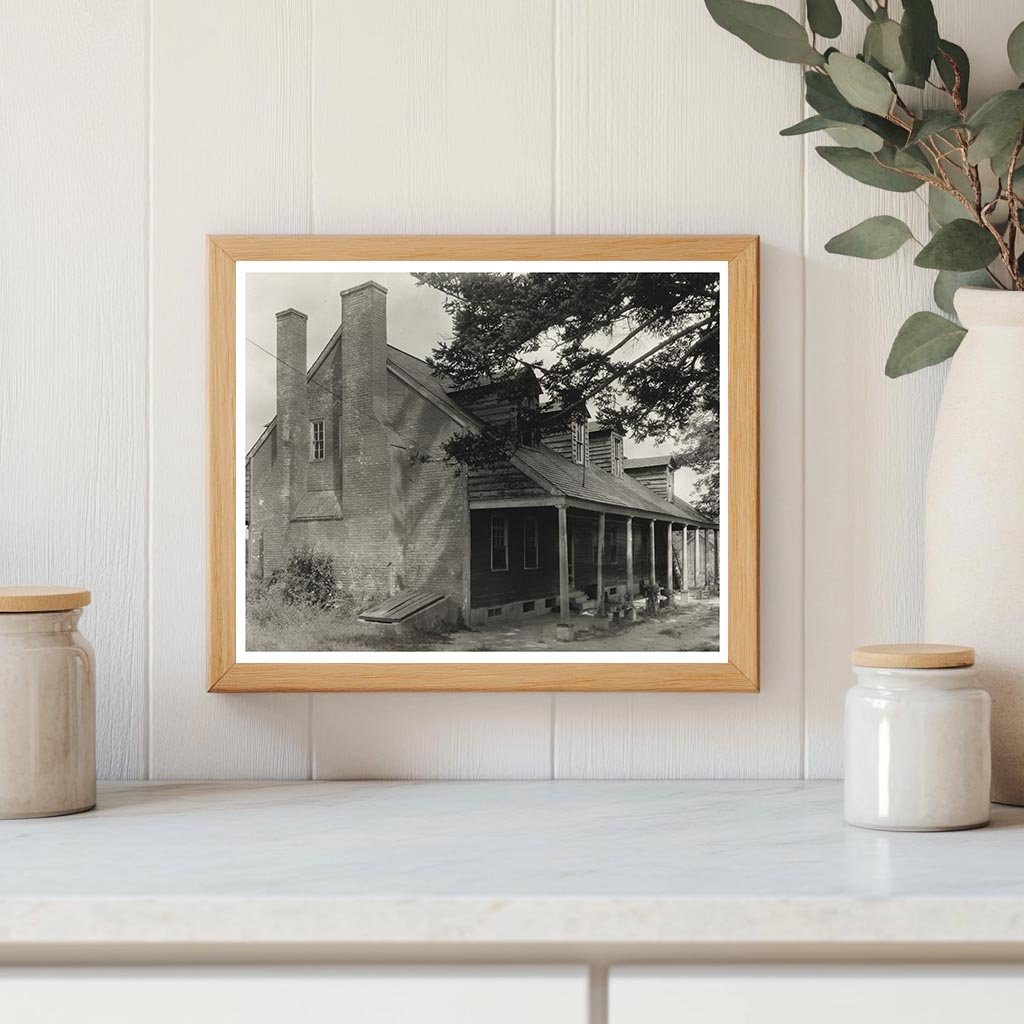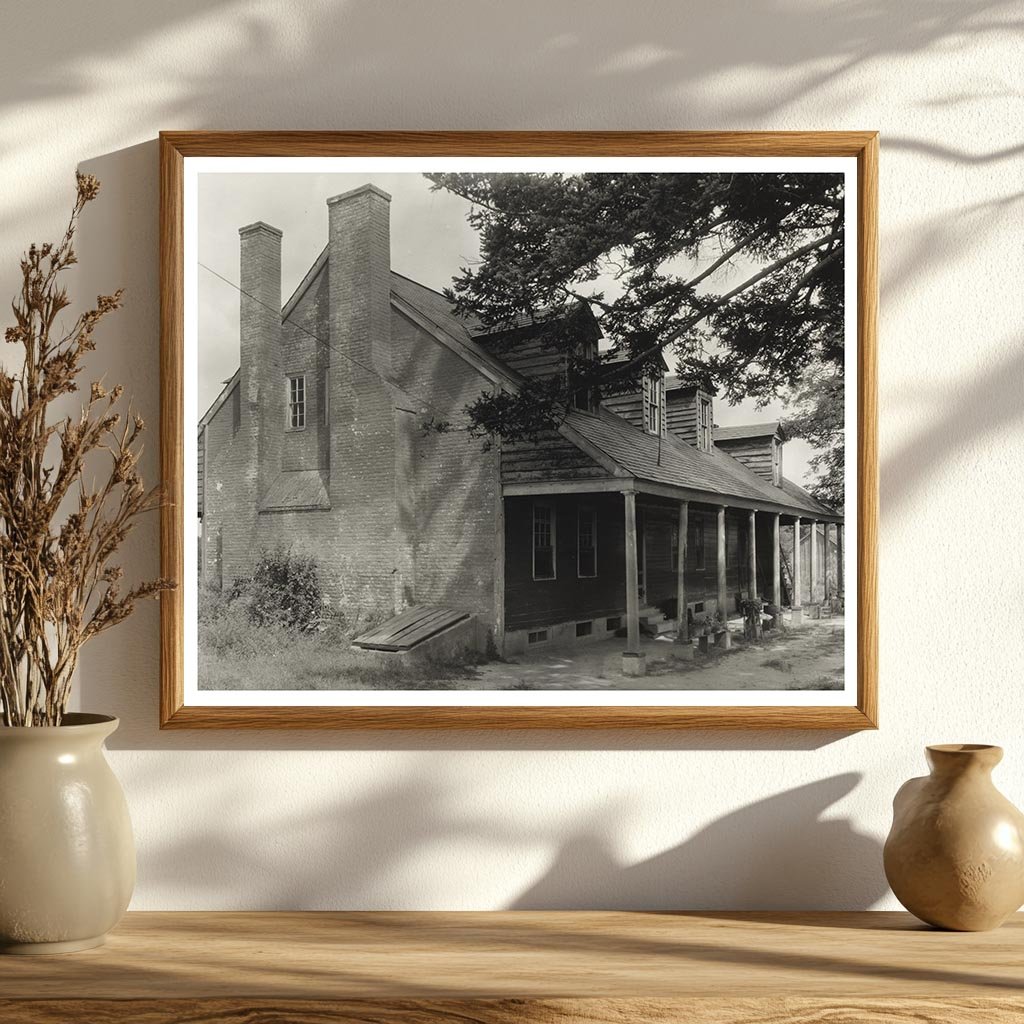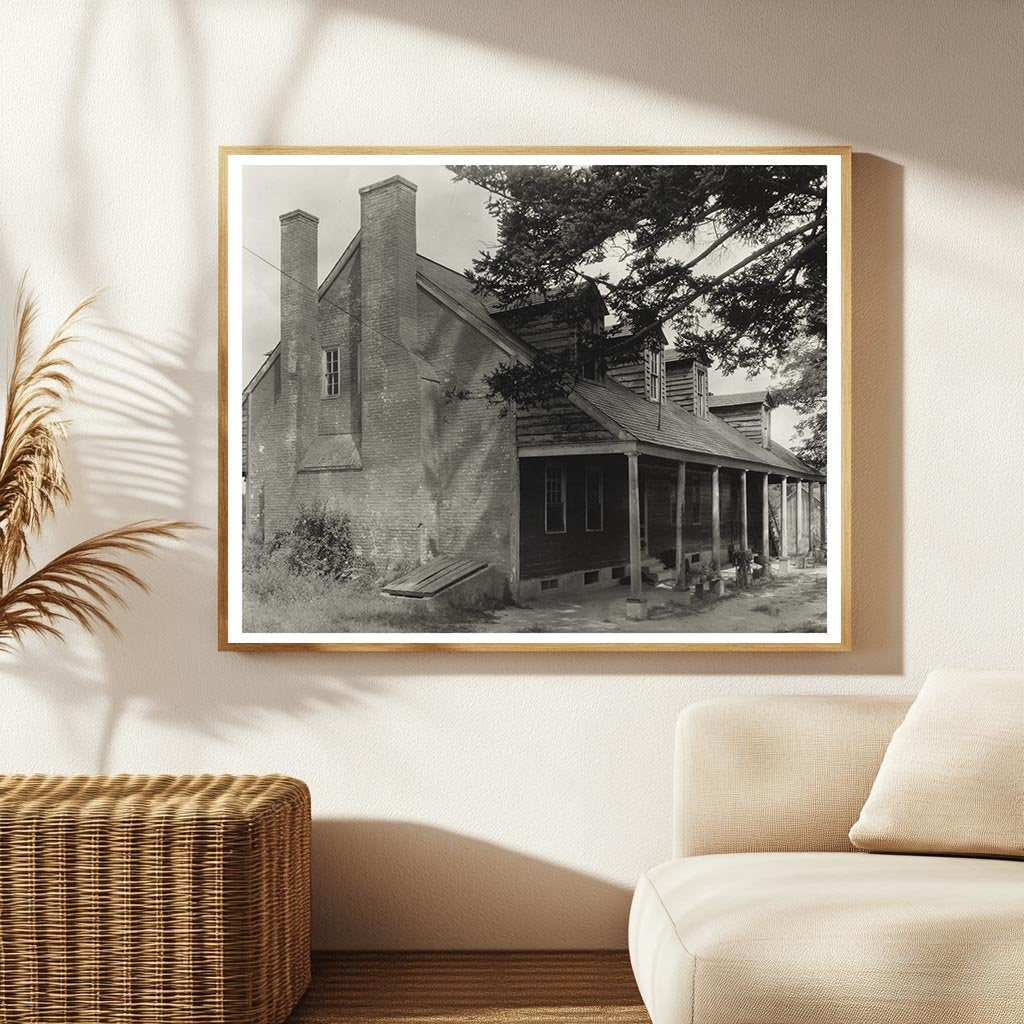



1696 Valley Lee Architecture, St. Marys County, MD
This vintage photograph captures an architectural gem from Valley Lee, St. Marys County, Maryland, dating back to 1696. The image showcases the intricate brickwork, prominent chimneys, and distinctive dormers that highlight the craftsmanship of early American builders. The structure exemplifies the colonial architectural style, reflecting the historical context of its time.
Valley Lee is a small, charming community in southern Maryland, known for its rich history and well-preserved buildings. The Carnegie Survey of the Architecture of the South, which includes this photograph, aimed to document significant structures across the region, contributing to the understanding of Southern architectural heritage.
The photograph was part of the Frances Benjamin Johnston estate, purchased in 1953, and is now housed in the Library of Congress, serving as a valuable resource for researchers and history enthusiasts. This image not only represents a specific location but also serves as a testament to the enduring legacy of early American architecture.

1696 Valley Lee Architecture, St. Marys County, MD
